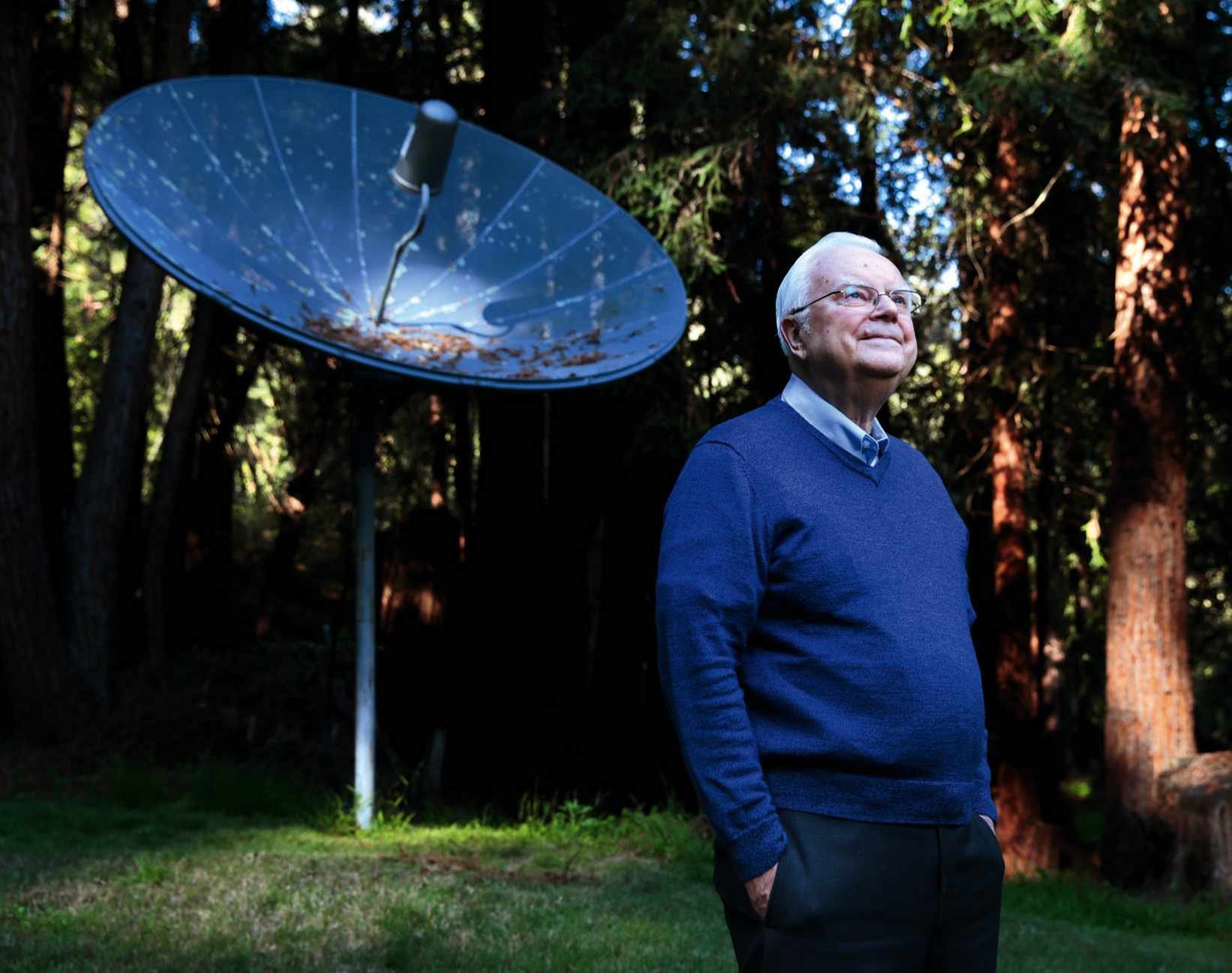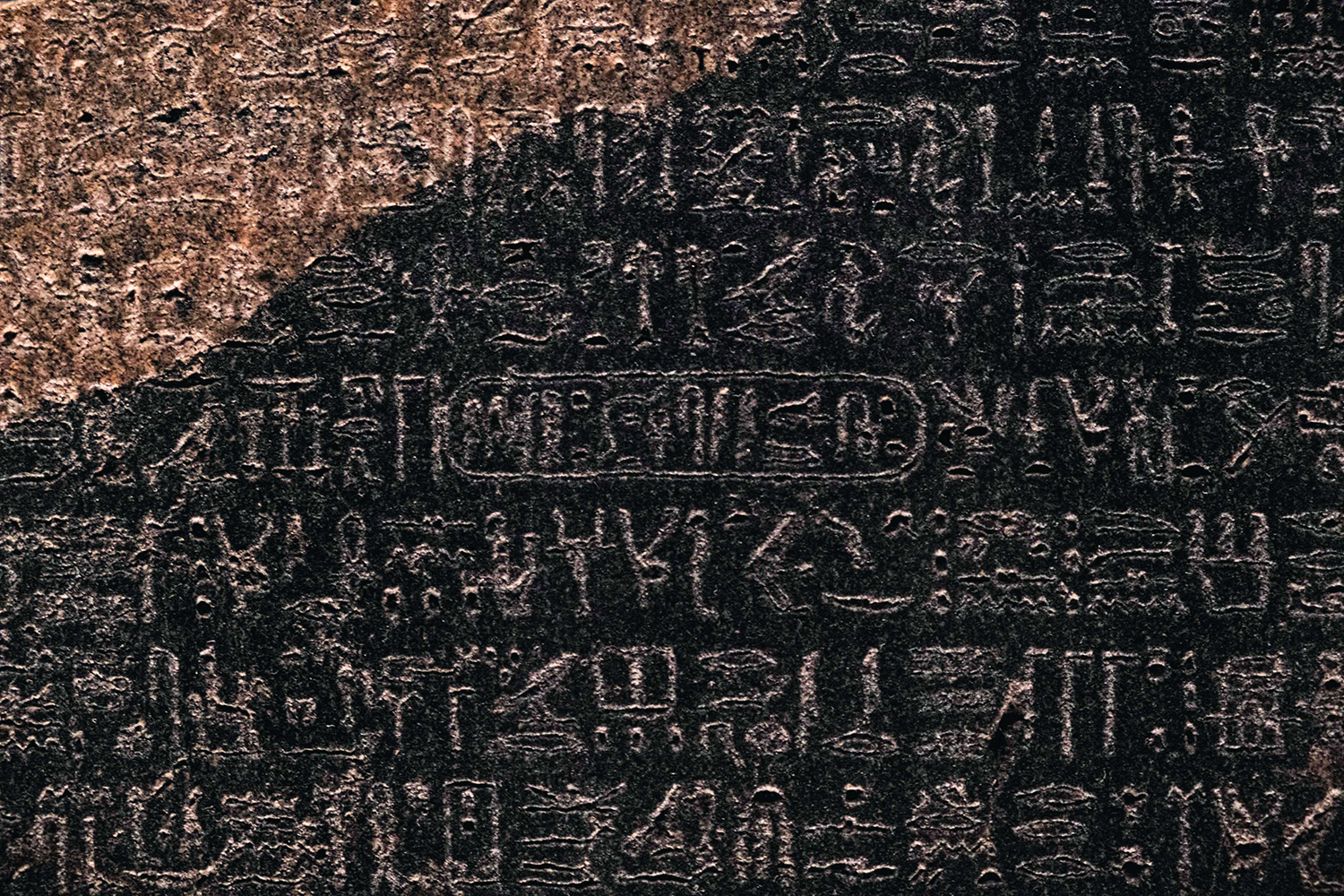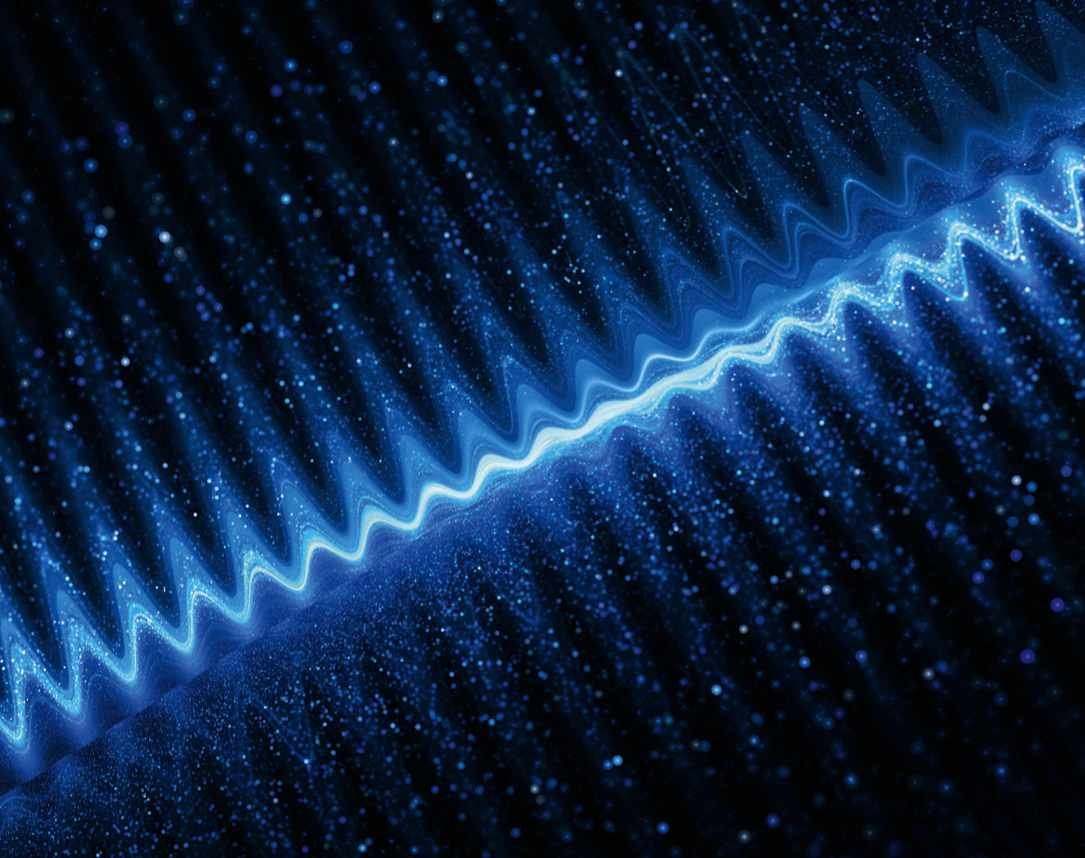FIRST CONTACT
WHAT HAPPENS IF WE EVER DETECT A SIGNAL FROM EXTRATERRESTRIAL INTELLIGENCE?

It all seems so simple in the movies. An astronomer – often a maverick – is sitting alone in a radio telescope’s control room when a strange signal comes across the speakers. Somehow, the astronomer knows instantly that it’s from another world and, a few computer clicks later, the message is decoded and the plot begins to unfold.
But how easy would it be to understand what an extraterrestrial civilisation is saying to us in real life? With a renewed interest in the search for extraterrestrial intelligence (SETI) sweeping across the world, that’s the question increasingly being discussed by linguists and other scientists.
“I’m optimistic. I’m quite certain that there’s no point in sending a signal that you don’t want to be understood. So it’ll be understandable,” says Sheri Wells-Jensen, associate professor of linguistics at Bowling Green State University, Ohio, and a board member of the Messaging Extraterrestrial Intelligence (METI) organisation. However, that doesn’t mean it’ll be easy to understand. Without direct access to the beings who wrote the message, it could take years, decades or centuries for us to decode the message. Or we may never decode it all. And here’s where things truly take a turn. Based on some researchers’ thinking, it may be that never decoding the signal is the best, safest option because we’ll have no way of knowing what such a message contains.
“WITHOUT DIRECT ACCESS TO THE BEINGS WHO WROTE THE MESSAGE, IT COULD TAKE YEARS, DECADES OR EVEN CENTURIES FOR US TO DECODE THE MESSAGE”
It’s easy to assume that a message would be benign, perhaps supplying us with information to shortcut centuries of scientific investigation, but some experts now think that the message might have a darker – even dangerous – intention. If so, is our quest to answer the question of are we alone, a case of being careful what we wish for?
A REALISTIC POSSIBILITY
The idea of other life in the Universe stretches back to antiquity. But according to David Dunér, a professor in the history of science and ideas at Lund University, Sweden, it became more realistic to consider the possibility in the 16th and 17th Centuries. This was the time of the Copernican revolution, when Earth was realised to be a planet circling the Sun, and the Sun was accepted to be just another star. This meant that all the other stars in the Universe had the potential to have planets around them as well.
During the 18th and 19th Centuries, scientists began to think of ways we might communicate with extraterrestrials. Thinking that the Moon could be inhabited, German mathematician Carl Friedrich Gauss suggested cutting down large swathes of the Siberian forest to display geometrical shapes. To be certain the signal was not misinterpreted as a natural phenomenon, he suggested that the forest be cut into a geometrical representation of the Pythagorean theorem.

It was in 1960 that American astronomer Frank Drake launched SETI as it exists today. He used the Green Bank Radio Observatory’s 26-metre dish to scan for alien radio signals from the nearby stars Tau Ceti and Epsilon Eridani. He didn’t receive anything that stood up to scrutiny, but it established the idea of using radio telescopes to search for extraterrestrial radio signals.
While interest in the endeavour has waxed and waned over the years, currently things are looking up. “There’s a resurgence in SETI at the moment,” says Prof Michael Garrett, director of the Jodrell Bank Centre for Astrophysics and the current chair of the International Academy of Astronautics (IAA) SETI Permanent Committee. He says that a catalyst for this new interest is the investment made by Russian-Israeli venture capitalist Yuri Milner, who studied theoretical physics at Moscow State University. As part of his Breakthrough Initiative programme, Milner has set aside $100m in funding for SETI. Beginning in 2016, Breakthrough Listen started using radio telescopes at the same Green Bank telescope where Drake began the search.
The programme is expected to last for a decade. Although this is primarily an American project, Garrett thinks that it’s fostering new interest in Europe and beyond. And with more observatories than ever spending at least some time searching for signals, there has never been a higher possibility of detecting something.

MESSAGE RECEIVED AND… UNDERSTOOD?
In the event that someone does receive a signal, the IAA SETI Permanent Committee has established a protocol for verifying a signal’s authenticity before making it public (see box below). While the protocol is designed to reflect the highest standards of scientific rigour to maintain credibility, the news would almost certainly leak beforehand, especially as the circle of people in the know widens as independent confirmation is sought.

“Even the best intention might be problematic to implement practically,” says Yvan Dutil, an independent researcher at SETI and member of the permanent committee.
Yet regardless of how and when the signal is made public, once confirmed as extraterrestrial, the question will be: what does it say? Almost certainly, finding out will be hard. Dunér, who is also a board member of METI, references the difficulty we encountered in deciphering the Egyptian hieroglyphs. The meaning of that ancient writing system was lost to us for around 1,500 years. We only managed to decipher it after Napoleon’s troops found the Rosetta Stone in 1799, which famously had the same text inscribed in three languages, one being hieroglyphs. Even so, it took another 20 years before French philologist Jean-François Champollion fully understood the Egyptian writing.

“INTERSTELLAR COMMUNICATION IS MUCH MORE CHALLENGING BECAUSE WE WON’T SHARE THE SAME BIOLOGY OR THE SAME BRAIN”
“It was very difficult, even though we had exactly the same brains as the Egyptians of 2000 BC. Interstellar communication is much more challenging because we won’t share the same biology or the same brain. We don’t even share the same planet,” says Dunér.
Without these things in common, communication is much more difficult. This is why some have suggested that mathematics and the laws of physics are the best things to begin a communication with because those will be universal. And if the extraterrestrials are transmitting, then they have clearly developed technology, which means they have an advanced understanding of physics. But just because everywhere in the Universe runs on the same laws of physics, that doesn’t mean extraterrestrials will conceive of them in the same way that we do.
“The way we express mathematics is dependent on our culture, our history and also how our earthly brains are constructed. So, they might express mathematics in different ways,” says Dunér.
SEND TO ALL
The same goes for the structure of language. For example, it seems entirely reasonable to expect their language to contain the equivalent of nouns, as there will be ‘things’ in their world. The aliens must also carry out activities, so there will be verbs too. But thinking like this might be a trap.
“The more I’m convinced that I know things, the more danger I’m in intellectually, if I’m wrong,” says Wells-Jensen.
In other words, to stand any attempt at deciphering a message, we must not rule anything out. She says that the best way to ensure that happens is to release all of the data, so that anyone who wants to can have a go at deciphering it.

“I have deep confidence in human curiosity. So we’ll take that sucker and we’ll poke at it and we’ll fuss over it until we get it,” says Wells-Jensen. So exactly what might extraterrestrials put into such a message? Wells-Jensen hopes for some helpful advice, saying, “It seems like we’re not doing so great down here and maybe we could use some input.” She subscribes to the idea that any extraterrestrial intelligence signalling across the Galaxy would be older and more advanced than our society, simply because of the technology needed to accurately target a planet from another star system.
Dutil, on the other hand, strikes a note of caution. What if the message is a Trojan horse, he wonders, a subtle attack wrapped up as a message of help? He draws the analogy with misinformation campaigns during wartime, where information is leaked to an enemy to undermine them. “Imagine you’re the most advanced civilisation in the Galaxy and you don’t want to share the Galaxy,” he says.
One scenario he suggests is the dark inversion of Carl Sagan’s novel Contact. In that story, benign extraterrestrials send humans the plans to build a gigantic machine. On paper, no one can fathom its purpose, but they build it anyway. It turns out to be a device for interstellar travel, bringing us into contact with the aliens. But what if the plans had been totally false, with the machine being all misinformation and nonsense? “Then it’s sucked up a huge amount of resources and commitment for nothing,” says Dutil. Or worse, the message contains plans for something that will work, but is a weapon to destroy the planet.

Even if the extraterrestrials don’t purposely set out to damage us, they may still end up fundamentally changing our intellectual capabilities, especially when it comes to practising science. Imagine the effect of deciphering the signal and finding that it’s a ‘core dump’ of the extraterrestrial’s knowledge base, and that they’re scientifically much more advanced than us. Surely a gift? Not necessarily, says Dutil.
“EVEN IF WE CAN’T SQUEEZE THE INTENDED MEANING FROM THE MESSAGE, WE’LL SQUEEZE SOME MEANING FROM IT. JUST UNDERSTANDING THAT WE’RE NOT ALONE OUT HERE WOULD BE A REVELATION”
Receiving a massive amount of knowledge risks undermining the principal skill of our science: blue-sky thinking. This is because instead of investigating lines of enquiry based on personal interest or current world problems without a fixed idea of where that work might lead, researchers will be working towards a known end-goal. If you know the outcome that you’re working towards, says Dutil, then “you could lose the basic scientific skill of understanding how to ask fundamental questions and investigate.”
HOW WOULD WE RECOGNISE A SIGNAL?

Recognising a possible extraterrestrial signal is a process of elimination. The first thing to do is weed out natural signals. These tend to be smeared over a large number of radio frequencies. Artificial signals, however, are confined to narrow bands around a single, central frequency. Most of these narrow-band transmissions will be interference from Earth, though. The way to weed those out is to look for traces of movement in the signal. Most terrestrial interference will be from transmitters on Earth, which are not moving relative to the telescope, while celestial signals will appear to move at the rate of the Earth’s rotation.
Movement shows up in radio signals through something called the Doppler Effect. This is the same phenomenon that makes the sound of an emergency vehicle’s seem to change speed as it approaches and passes you. As the Earth rotates, it will impart a specific Doppler Effect on a celestial source that astronomers can isolate and distinguish from other moving sources such as aircraft and satellites.
SOMEONE TO TALK TO
These are dark thoughts, and they raise the possibility that perhaps the best outcome would be that we’re unable to understand the message. Even if that is the case, Wells-Jensen thinks that we would still gain a lot. “Even if we can’t squeeze the intended meaning from the message, we’ll squeeze some meaning from it. Just the understanding that we’re not alone out here would be a revelation. So even if we don’t get what they’re trying to tell us, we’ll take some lessons from it. And that will be a success.”
The detection of an extraterrestrial signal is often described as the greatest discovery that science would ever make. Clearly, it seems that’s true for the mere act of detection. It would prove to us once and for all that we’re not alone; that the dark realms of space are alive with intelligence looking back at us.
But when it comes to the deciphering that signal, the consequences become much more difficult to navigate. Rather than a straightforward gift, it seems that it would almost certainly be more like opening Pandora’s box. When it comes to SETI, be careful what you wish for.
TIMELINE OF DETECTION
The International Academy of Astronautics (IAA) SETI Permanent Committee is the world’s only international forum for the discussion of SETI. It meets every year at the International Astronautics Congress. In 1989, it adopted a set of nine principles concerning what happens after the detection of an extraterrestrial signal. Paraphrased, those guidelines say:
1. Anyone who thinks they have detected an extraterrestrial signal should not rush to make a public announcement. Instead they should first seek to verify their conclusion.
2. Once the discoverer has completed their due diligence, other organisations signed up to the guidelines should be informed (and the discoverer’s government) so that they too can seek to confirm the discovery.
3. If these partners find that the signal is credible evidence of extraterrestrials, the discoverer should then inform international bodies, including the Central Bureau for Astronomical Telegrams and the UN.
4. The detection should now be communicated promptly, openly and widely. The discoverer should have the privilege of making the first public announcement.
5. Data concerning the detection should be made available to the international scientific community.
6. The source of the signal should be monitored and any additional detections should be distributed for further analysis.
7. The International Telecommunication Union should be notified so that the frequencies on which the signal was detected can be protected.
8. No response to the signal should be sent unless international agreement to do so is reached.
9. An international committee of scientists and other experts should be established as a touchstone for analysis of the signal.
The full wording of the Declaration of Principles Concerning Activities Following The Detection Of Extraterrestrial Intelligence can be found at iaaseti.org.
(@DrStuClark) Stuart is an astronomer and journalist. His latest book is Beneath The Night: How The Stars Shaped The History Of Humankind (£14.99, Faber).

Watch First Contact on 6 October 2022. Check Radio Times for details.